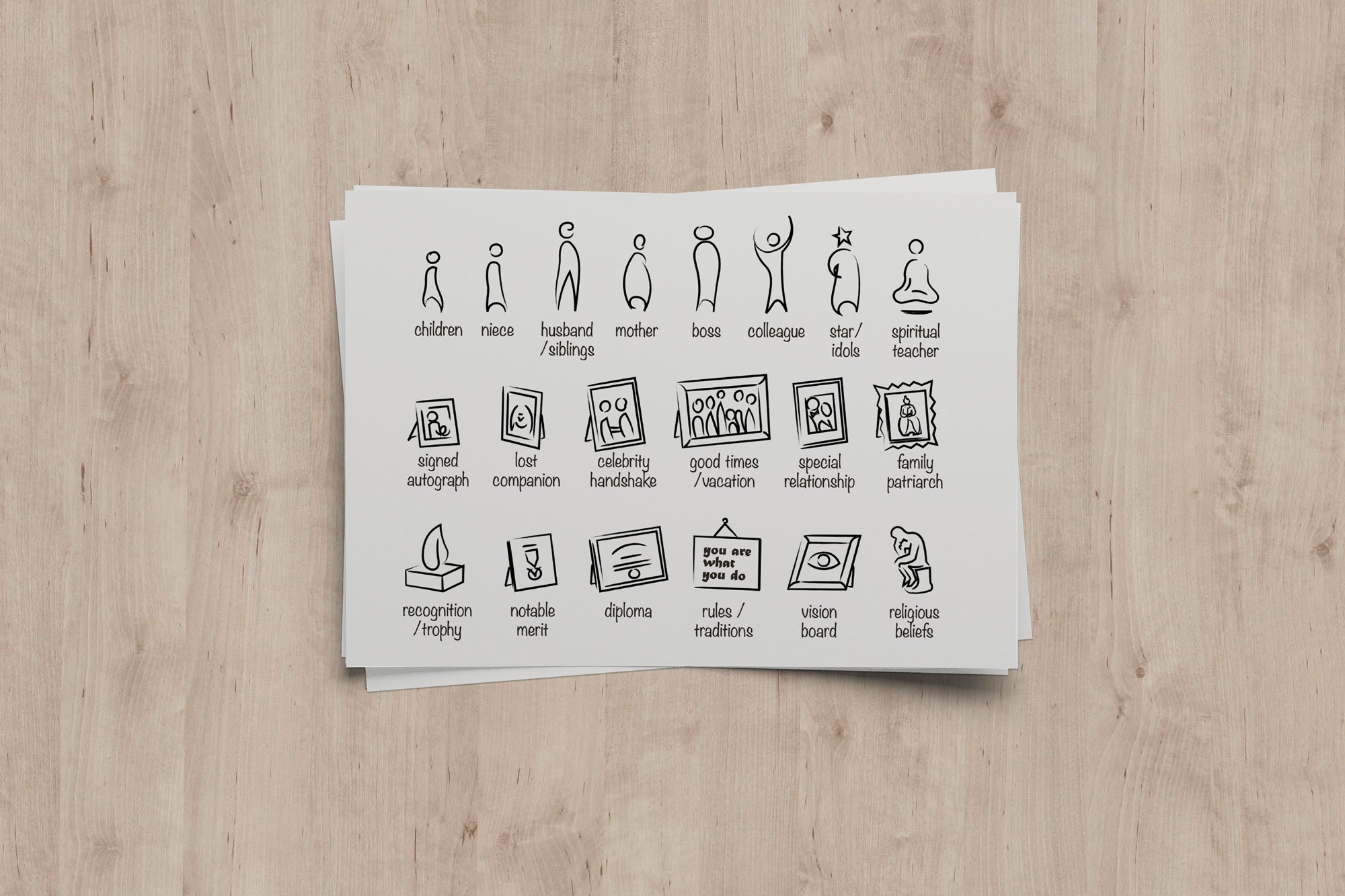PRACTICES FOR PERCEPTION
The Dreamer’s Ladder
Captivity → Curiosity → Chemistry → Clarity
A practical way to spot your current mind-state and climb one rung toward awareness—no doctrine, just perception in motion.
What mind are you in right now—captive to the story, casually observing, tinkering with meaning, or quietly awake?
If reality is consciousness-first—if we’re the One Mind dreaming this world—the honest test is experiential. The Ladder turns that hypothesis into something you can run today: notice where attention is, shift it up one rung, and see whether identification with body, death, and thought starts to loosen. The aim isn’t to win a state; it’s to sample the place that isn’t in the story at all.
How to use the Dreamer’s Ladder (in one line): Identify your current C → use the next C’s micro-practice → if stillness shows up, drop the labels and rest.
Example (judgment trigger): Catching yourself judging—of yourself or someone else—signals Captivity. Name it. Nudge to Curiosity with one honest question: “What else could this mean?” Try Chemistry, open a large space in your mind (reframe, brief visualization, or transcendental release) to make the whole world fit in. If a quiet loving awareness arises, that’s Clarity—stop doing and let it be. When the ego re-hooks—as it will—start again.
Why this matters (for a consciousness-first experiment)
Nondual traditions say there’s only One—and a strand of contemporary physics and philosophy of mind makes a parallel claim: consciousness may be fundamental. Separation, then, is just a perceptual habit. You don’t have to believe that to try this. The Dreamer’s Ladder (Four Cs) offers observable levers: labeling breaks the trance; shifting perspective changes what you see; creative visualizations invite the awareness that existed before any role you played—mythical or not. Over time, the “me” softens, expands beyond the body, and the One Mind—the untouched Dreamer—feels less like a theory and more like your baseline.
Let’s climb the frequency together—one rung at a time.
A small climb of mind is enough to return to Oneness—the consciousness-first view where mind projects the world. Nothing truly holds us, except a narrative.
Here’s how to expose it:
“A lucid thought recognizes Captivity: a state clinging to a dream called “self.” The captive looks within and remembers the one who dreams.
Curiosity wanders the dream-world of forms like a flâneur—receptive, detached, in quiet awe—watching the little performances from the bleachers.
When it’s time to exit, Chemistry surfaces to reframe perception, gently loosening identification with the body—the lucid alchemist stirring.
From there, Clarity enlightens the world. The Dreamer sees the “self” as an old projection in a passing dream.
Captive no more. Curious for a while. Fixer for an instant. Forever free: perfect oneness.
The choice to awaken reveals itself as choiceless; the dream, an ancient memory.”
Instructions
To Glimpse the Possibility That Everything You See Is Already Inside
Recognizing that everything we encounter may be part of a single field of consciousness—what some call the “One Mind”—has quietly changed the way I move through the world.
Repeating the phrase “piece of mind” became a way to dissolve boundaries I didn’t know I was enforcing. Not as a spiritual technique, but as a perceptual experiment. It gently loosens the grip of attachments, softens reactions, and opens a kind of flexibility in how I relate to change, tension, or uncertainty.
In my own life, it’s helped when facing the very ordinary frictions: digital overload, relationship tensions, financial pressure, moments of anxiety or grief. Saying “piece of mind” wasn’t a cure—but it was a cue. A reminder that what I’m seeing might not be separate from what I am.
That possibility—drawn from the crossroads of cognitive science, consciousness studies, and poetic perception—invites a shift.
Not from ignorance to truth.
But from fragmentation to a quieter kind of wholeness.
Sometimes, without effort, that shift feels like a kind of peace.
A “peace of mind” that emerges not from solving life, but from seeing it all—object by object, moment by moment—as something already inside.
Martin Lenclos
“At its simplest, piece of mind isn’t a call to action—it’s a quiet, up-layered thought. A soft interruption. A repeatable gesture that loosens the tension we carry from believing we’re apart.
It offers no answers—only a lens. A way to test whether the suffering of separation begins to dissolve when we stop seeing the world as made of many things, and start sensing it as one seamless mind, appearing briefly as many.
Try this: Ask yourself, what if nothing I see is outside me… but part of the same thought? And if there is only one thought, then—with no two—there can be no opposition, no contradiction.
There can only be Peace of Mind”
JOURNAL ANNOTATION
From Piece to Peace
These reflections weren’t written to teach, but to trace a shift in perception that unfolded through practice. The tone here leans more mystical, yet it remains part of the same experiment: What happens when I live as though the world is dreamed inside One Mind? Some of these thoughts were shaped by ancient texts in Eastern philosophy, others arose in silence or sudden clarity—and many emerged in the space between.
We are one in the now.
Sometimes I feel that—not as a belief, but as a strange stillness that settles over everything.
It doesn’t last long. But it leaves something behind.
Over time, this practice begins to sink in. Not as a lesson, but as a shift.
A slow, quiet change in how the world appears.
Moments that used to seem ordinary begin to feel connected.
As if the mind is piecing together something larger—
not by effort, but by letting go.
From initial insight to some unexpected calm,
the movement is subtle. But it’s there.
There’s a point when I no longer look for meaning in what happens—
and instead begin to see meaning in everything at once.
That’s when “piece of mind” starts to turn into “peace of mind.”
Not a dramatic revelation, but a reorientation:
from personal identity stretched across time
to something vertical, immediate, and hard to name.
Not me in the moment—but mind itself, quiet and whole.
At times, it feels like everything drops away.
Not the world itself—but the way I thought it worked.
The mind stretches beyond the edges I used to trust—
beyond location, body, and name.
And in that wide space, something else becomes available:
Not a better version of “me,”
but a sense of Self that doesn’t begin or end.
The usual concepts—roles, beliefs, the need to explain—start to dissolve.
What’s left isn’t empty.
It’s still.
A mind not bound by thought,
a presence that isn’t trying to be anything.
I wouldn’t call it enlightenment.
But it does feel like remembering.
That I am not in life—
but life itself.
Not someone seeking love—
but the space in which love quietly exists,
asking nothing in return.

Overcome Worldly Attachments
Think "piece of mind."
Deep dive into 'Piece of Mind' with the essay.




‘Piece of Mind’ is not just a mantra but a gateway to seeing the world and ourselves as part of an interconnected whole. Inspired by the latest in consciousness studies and rooted in ancient spiritual traditions, it encourages a transformative journey from perceived separation to intrinsic wholeness. This practice influences not just personal well-being and creative expression, but also reshapes our interactions with others and our approach to the challenges of modern life. Join me as we delve deeper into integrating this profound understanding into daily living, fostering a sense of peace and unity that extends beyond the self.